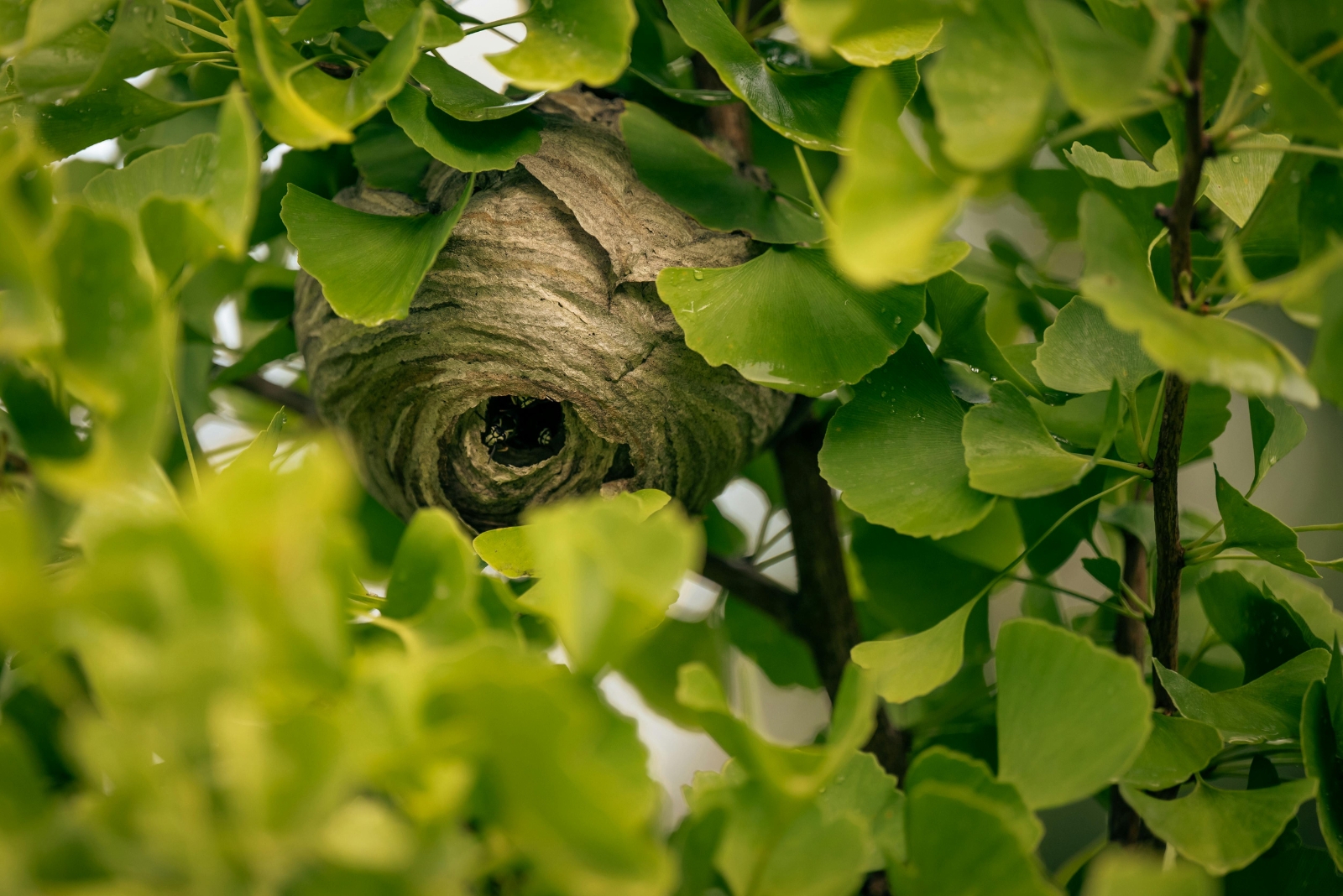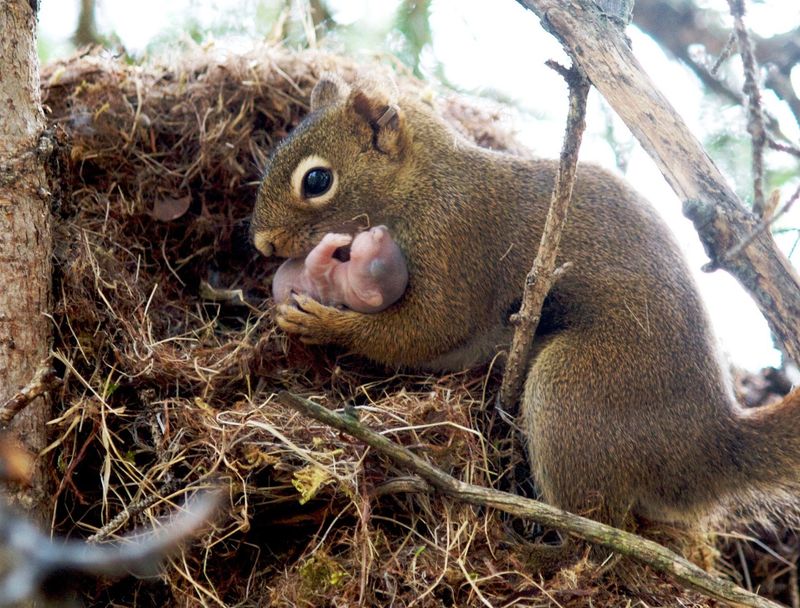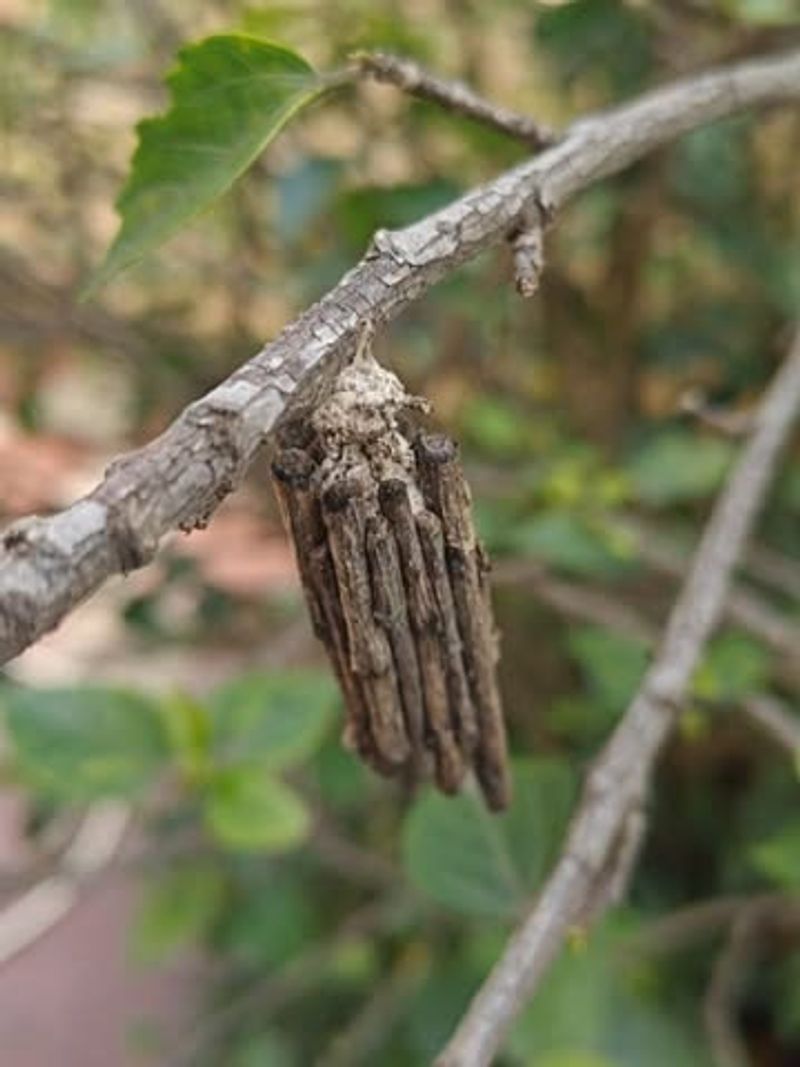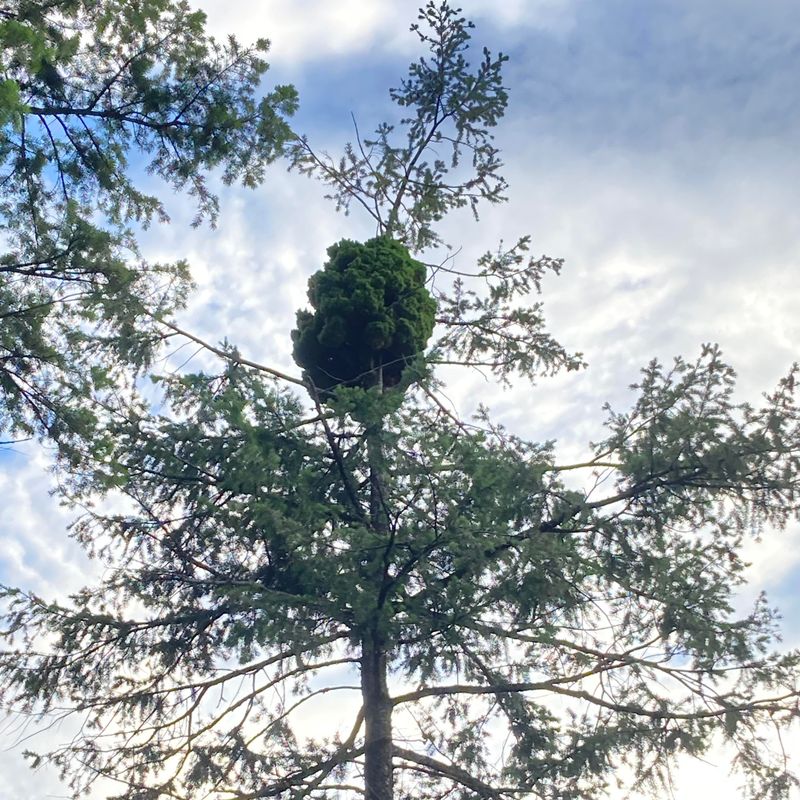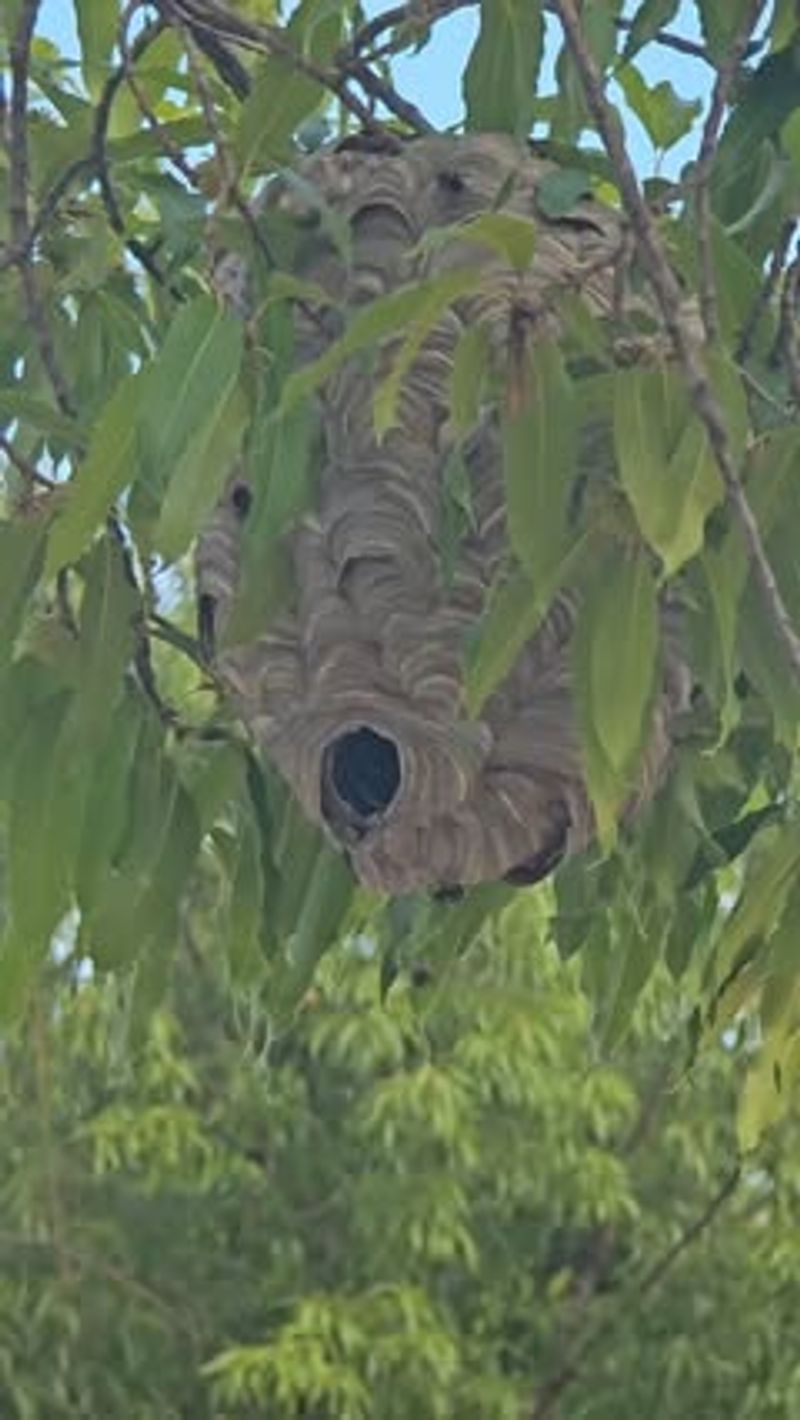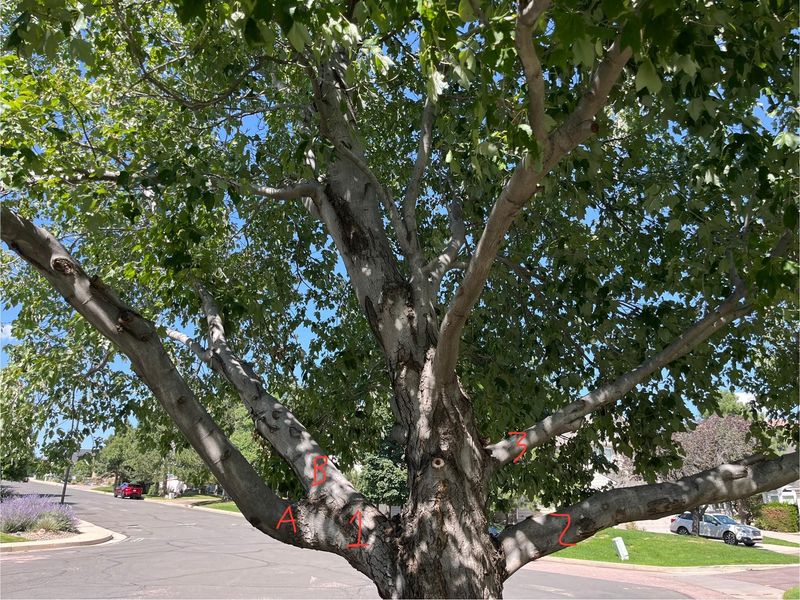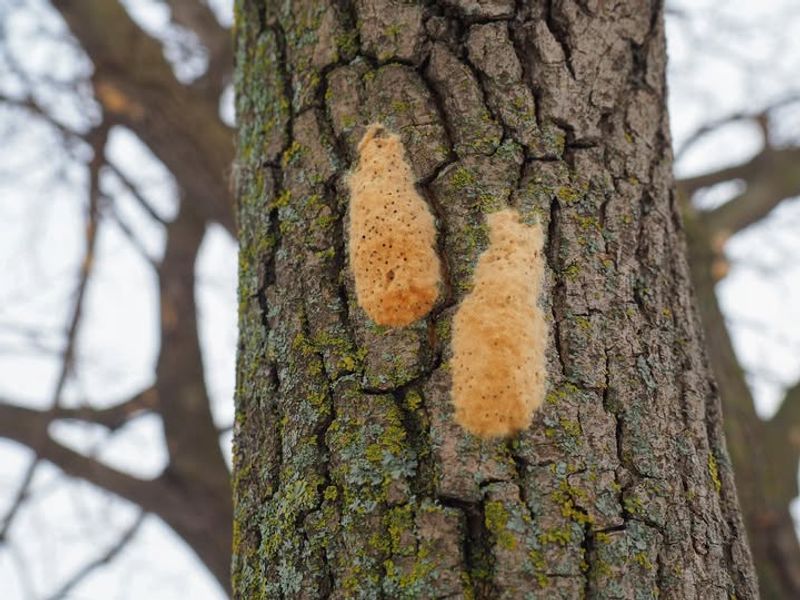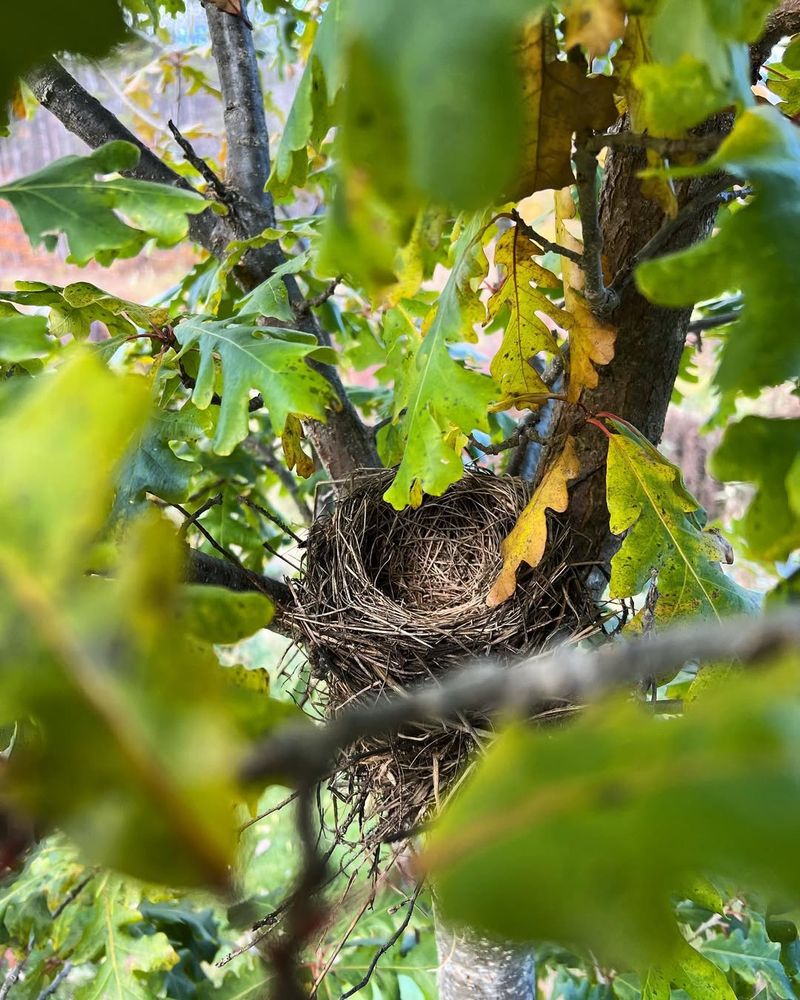You might glance up at your Connecticut tree and spot a messy ball of leaves, assuming it’s just another bird nest. But look closer—something else might be living there.
From sneaky squirrels to a few unexpected guests, that leafy bundle could tell a different story. Let’s find out what’s really tucked away in those branches.
1. Squirrel Dreys Are Cozy Winter Homes
Squirrels build leafy structures called dreys that look remarkably similar to bird nests from the ground. Gray squirrels are especially common throughout Connecticut and construct these shelters using leaves, twigs, and bark strips.
A drey is typically larger and messier than most bird nests, often positioned close to the tree trunk. Squirrels prefer oak and maple trees, which are abundant across Connecticut neighborhoods.
You might even spot squirrels carrying leaves in their mouths during fall as they prepare for winter.
2. Bagworms Create Hanging Leaf Pouches
Bagworms are caterpillars that construct protective cases from silk and bits of leaves or needles from their host tree. These unusual insects are found in many Connecticut yards, particularly on evergreens and deciduous trees.
The bags hang from branches and can be mistaken for small bird nests or clusters of dead leaves. Each pouch houses a single caterpillar that feeds on tree foliage.
Left unchecked, bagworm infestations can seriously damage trees, so Connecticut homeowners should remove these bags when spotted.
3. Witches’ Broom Disease Causes Leaf Clusters
Witches’ broom is a plant disease that creates dense, tangled masses of twigs and leaves that resemble nests from afar. Various fungi, bacteria, and even mites can trigger this abnormal growth pattern in Connecticut trees.
Infected branches produce excessive shoots that grow in tight clusters, trapping leaves and creating bushy formations. Maples, birches, and cherries commonly develop witches’ broom in the Northeast.
While usually not fatal, these growths can weaken branches and should be pruned away to maintain tree health.
4. Wasp Nests Disguised by Leaves
Paper wasps and hornets sometimes build their papery nests in tree branches, and falling leaves can stick to the exterior or accumulate around them. Connecticut sees plenty of bald-faced hornets that construct large, grayish nests.
From a distance, a wasp nest partially covered with leaves can easily fool someone into thinking it’s a bird nest or leaf bundle. Wasp nests are usually teardrop-shaped or spherical with a paper-like texture.
Always approach suspicious structures carefully, especially during summer when wasps are most active and protective.
5. Wind-Blown Leaf Accumulations
Sometimes nature creates accidental art when strong winds wedge leaves into tree branch forks and crevices. Connecticut experiences nor’easters and autumn windstorms that send leaves swirling into trees where they become trapped.
Branch angles and rough bark can catch and hold leaves, building up over time into surprisingly nest-like formations. These accumulations lack the structured weaving of actual nests.
A gentle poke with a long stick will usually cause these loose collections to fall apart, unlike the sturdy construction of real animal homes.
6. Gypsy Moth Egg Masses Look Fuzzy
Gypsy moths lay distinctive tan or buff-colored egg masses on tree trunks and branches that might be mistaken for odd nests from a distance. Connecticut has dealt with gypsy moth invasions for decades, making these egg masses a familiar sight.
Each mass contains hundreds of eggs covered in fuzzy hairs from the female moth’s body. They’re typically oval-shaped and about the size of a quarter or larger.
Scraping off these masses in fall or winter helps control gypsy moth populations and protects Connecticut trees from spring defoliation.
7. Abandoned Nests Collecting Debris
Old bird nests that were abandoned after breeding season often collect additional leaves, twigs, and debris throughout fall and winter. Many Connecticut birds build fresh nests each spring rather than reusing old ones.
Wind and weather gradually transform these former homes into messy leaf balls that barely resemble their original structure. Robins, grackles, and jays commonly leave behind nests that become debris collectors.
While these were once bird nests, they’re now just nature’s recycling bins, slowly decomposing and returning nutrients to the ecosystem.

